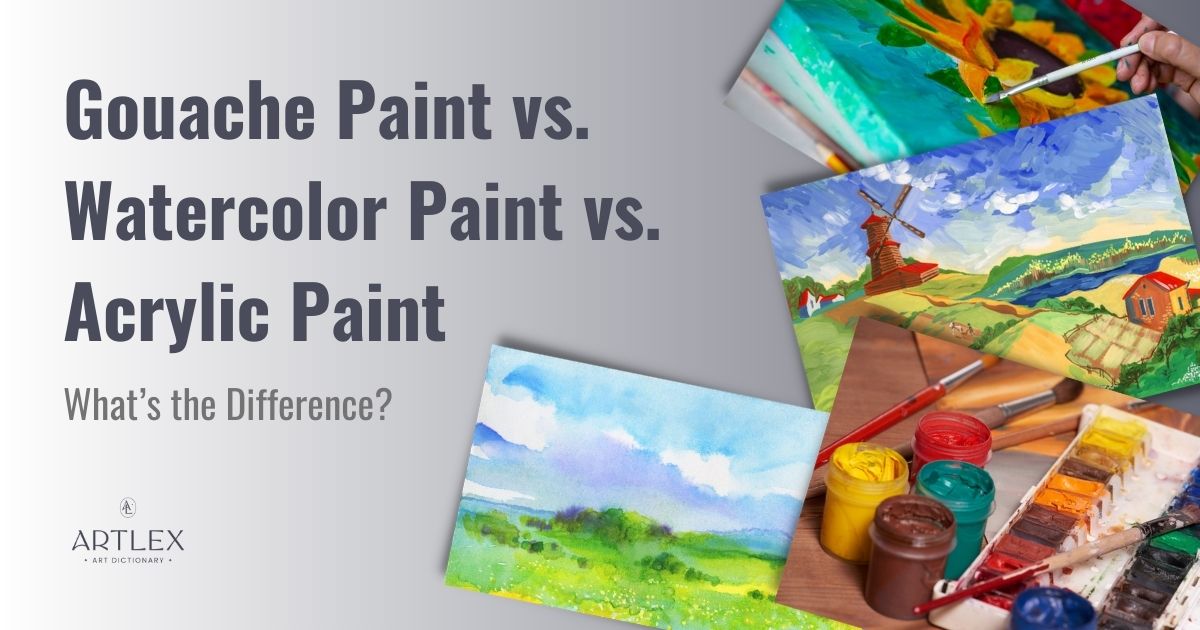
Gouache vs. Watercolor vs. Acrylic Paint
Although many artists’ are familiar with different mediums, few know the differences between watercolor and gouache (pronounced “gwash”) and acrylic paints. Generally made of the same ingredients, including gum Arabic, pigment, and the same binder, the primary difference is that gouache has a matte finish, whereas watercolor is transparent. On the other hand, acrylic paint is made with pigment and an acrylic medium, a plastic binder.
- Gouache Paint:
- Characteristics: Opaque and matte with chalky grains; dries faster than watercolor.
- Uses: Ideal for illustrators and for projects requiring vibrant, flat colors or thin layers.
- Surfaces: Best applied to hot-press watercolor paper.
- Durability: Less lightfast than acrylic; requires varnish and glass for longevity.
- Acrylic Gouache: Waterproof and more durable than traditional gouache; combines features of acrylic and gouache.
- Watercolor Paint:
- Characteristics: Transparent and slow-drying, with subtle color variations.
- Uses: Best for soft, blended shapes and light washes.
- Surfaces: Watercolor paper is essential for optimal absorption.
- Durability: Easily reactivated with water unless protected by a fixative or glass.
- Acrylic Paint:
- Characteristics: Pigment bound with acrylic polymer (plastic); water-resistant, lightfast, and vibrant.
- Uses: Versatile for various textures, layers, and techniques, including palette knife applications.
- Surfaces: Can be applied to paper, canvas, wood, glass, metal, and more.
- Durability: More resilient than gouache and watercolor; withstands exposure to moisture and UV rays.
- Comparison of Key Features:
- Finish: Gouache and acrylic gouache are matte; watercolor is transparent; acrylic offers matte, satin, or glossy finishes.
- Reactivation: Watercolor and gouache are water-soluble after drying, unlike acrylic, which becomes waterproof.
- Lightfastness: Acrylic is the most lightfast, followed by gouache, with watercolor being less resistant to fading.
- Suggested Applications:
- Gouache: For illustrations, posters, or projects needing solid, vibrant colors.
- Watercolor: For delicate, layered washes and soft gradients.
- Acrylic: For multi-layered, textured work or projects on non-porous surfaces like glass or metal.
Each paint type—gouache, watercolor, and acrylic—offers unique benefits tailored to different artistic needs. Gouache suits bold, opaque illustrations; watercolor excels in soft, blended compositions; and acrylic stands out for its versatility and durability. Choosing the right medium depends on the project’s goals and the desired finish.
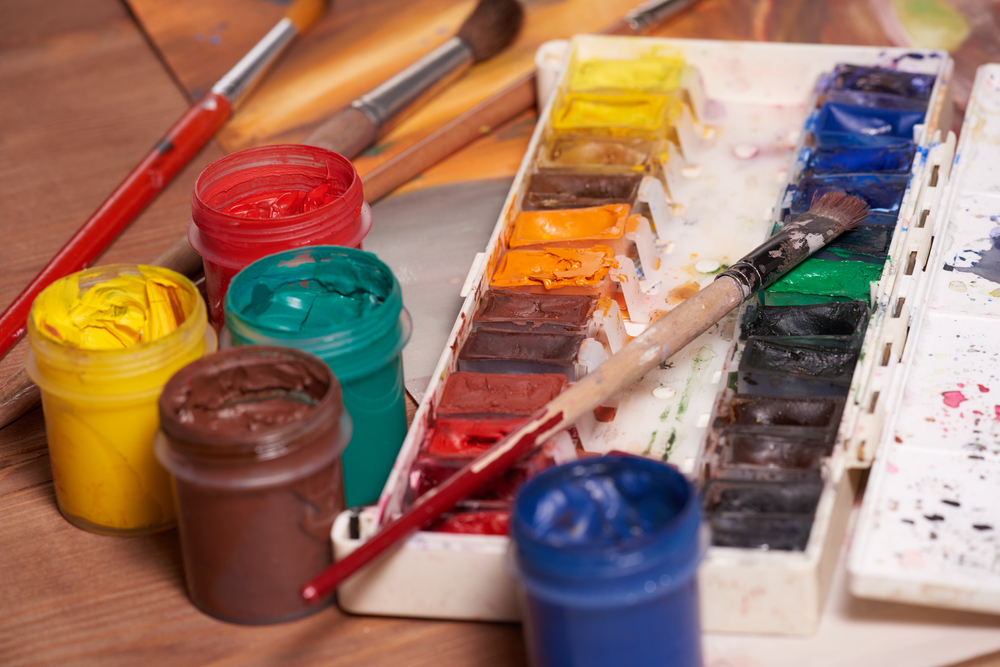
Watercolor and gouache are water-based paints and have a water-based media. A water-based media simply means that the paint is water-soluble and can be cleaned with water when wet.
While acrylic, gouache, and watercolor paints are all water-soluble, they are applied differently to create a beautiful masterpiece.
Read on to discover the main differences between gouache vs. watercolor vs. acrylic.
Gouache Paint
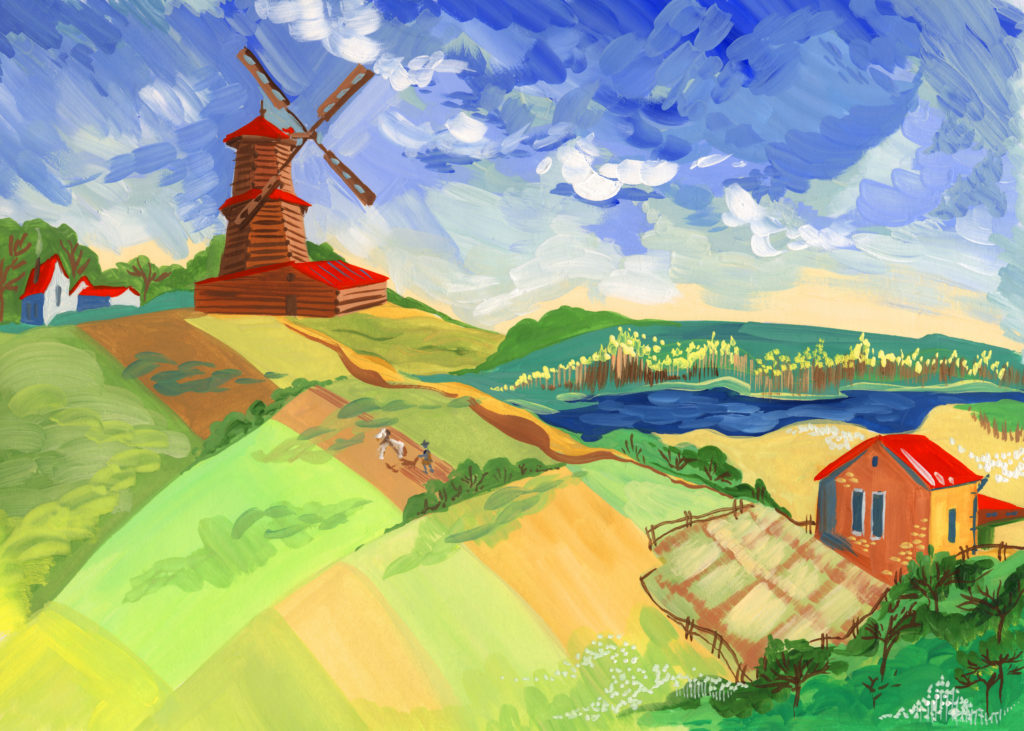
Watercolor and gouache may be water-based, but their consistencies are different. Traditional gouache paints have larger, chalky grains and higher pigment quality than watercolor paints, making them more like an opaque watercolor.
This makes gouache opaque when dried and leaves a matte finish, similar to egg tempera. Tempera paint is also known as poster paint and is commonly used in schools since it’s non-toxic and inexpensive.
In addition, gouache has less lightfastness, meaning it’s less resistant to fading over time than acrylic. What’s more, some artists substitute a white gouache for Titanium White, mainly to hide mistakes in their artwork.
While each person has a specific painting style, we suggest allowing the first layer of gouache to dry before applying the subsequent layers. This will help highlight the matte finish and color consistency.
Gouache dries faster than watercolor and is commonly used by illustrators for its matte finish and opacity. In addition, gouache paint is best used for paintings with thin layers. To extend the life of your gouache paintings, we recommend protecting them with varnish and covering them with glass.
Due to its similarity with watercolor, watercolor brushes can be used to apply gouache.
Acrylic Gouache
Acrylic gouache, unlike traditional gouache, is an opaque, matte acrylic paint. It is truly the best of both worlds in that it is waterproof once dried, whereas gouache paints are not.
Acrylic gouache painting lasts longer than a typical gouache painted piece and, like acrylic paints, dry quickly. Like acrylics, this paint can also be successfully applied to various surfaces.
Best Surface for Gouache Paint
Hot press watercolor paper is the best surface for gouache paints due to its flat surface. Best for single-layer applications of one or two colors, this type of paper does not hold much water and will warp. It can be found at a local art supply store.
Watercolor Paints
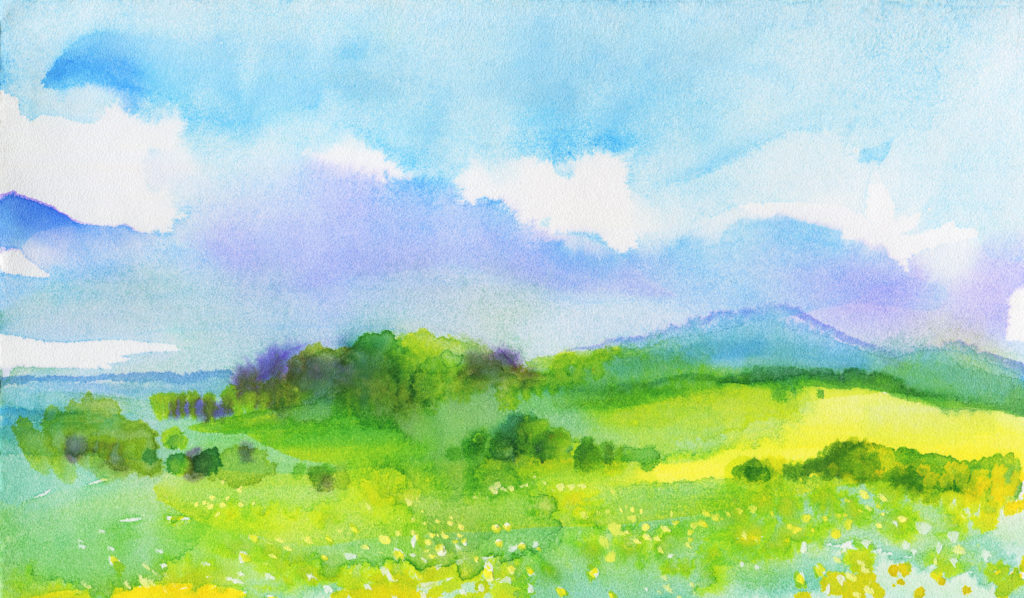
Watercolors are used by watercolor artists who appreciate the subtle color variations found in this medium. Of the different paint types, watercolor is the most slow-drying paint since its water-soluble and thin base requires more drying time.
While the two paints– watercolor and gouache are water-based paints, gouache, an opaque watercolor, will hide mistakes better than watercolors. In addition, it’s best to allow the first layer of paint to dry completely before applying the next layer, unless you want the colors to blend into one another.
Note, watercolors, even their dry paint, if exposed to water, will become water-soluble again. Applying a fixative will help protect a watercolor painting. Watercolor is best used for colorful shapes, and the fewer brush strokes used will help the transparent pigments have less overlap.
What’s more, artists of any skill level will find the tips and suggestions in the beautifully illustrated Watercolor Artist Magazine inspiring and informative.
Best Surface for Watercolors
Watercolor paper is by far the best surface for watercolor.
Acrylic Paints
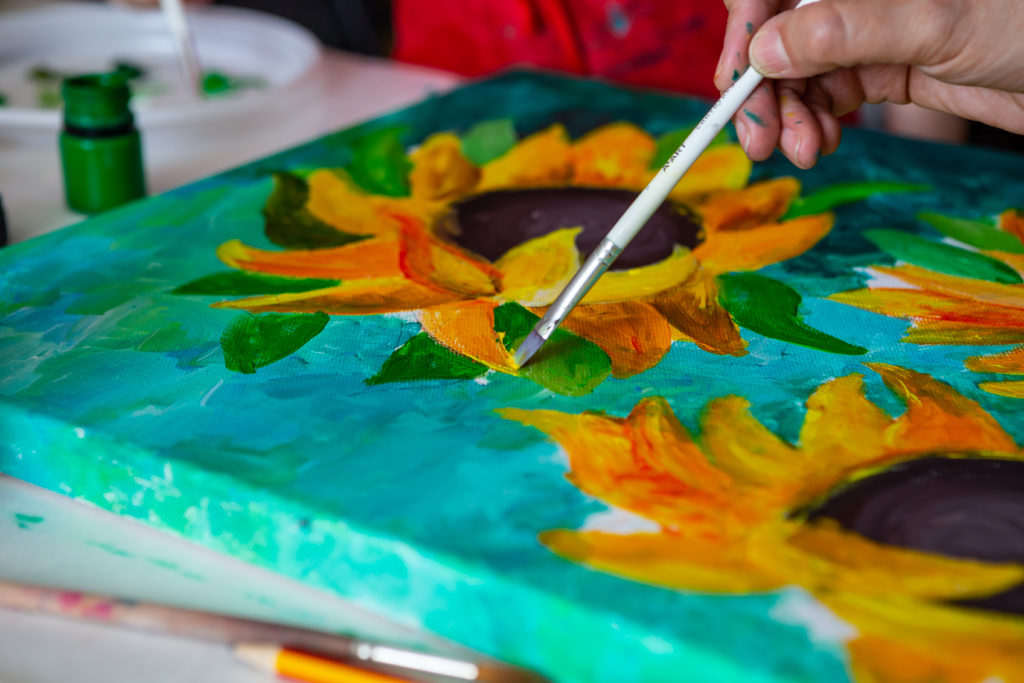
Acrylic paint is a pigment bound with an acrylic polymer (plastic), making it the most durable paint between gouache and watercolor. It also contains more vibrant colors. While acrylic paint is another water-based paint, its pigments tend to be more lightfast. It is also water-resistant, meaning that water won’t reconstitute the colors like gouache or watercolors once dried.
While it is water-resistant, any painting should still be protected by varnish and glass if the painting or paintings are displayed outdoors or in areas with high moisture. This holds for gouache and watercolor as well.
Unlike gouache and watercolor, a palette knife will create a unique texture to acrylic paintings., Acrylic, similar in consistency to oil-based paints, can add multiple layers or blend colors in the acrylic painting using a palette knife.
Acrylics dry with either a satin, matte or glossy finish. If framing the painting, allow the acrylic to dry completely. In addition, for more durability, apply a fixative to the dried acrylic.
Best Surface for Acrylic Painting
While paper and canvas are the most common surface used to paint with acrylic paints, its durability means that acrylic paints can be applied to most surfaces, including glass, wood, metal, seashells, and many other surfaces.
Read our article here for more detailed information about applying acrylic paint to glass.
Conclusion
We hope our article comparing the differences between acrylic paint and watercolor and gouache and their different paint types was informative. We hope you better understand when it’s best to use gouache, acrylics, or watercolor for your next painting project.
